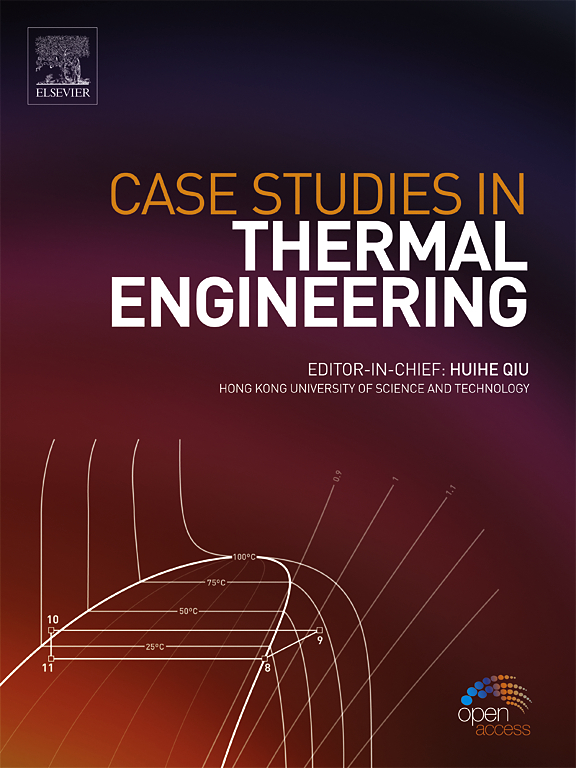A novel high-temperature water cooling system utilizing cascaded cold energy from underground water plants in northern China
IF 6.4
2区 工程技术
Q1 THERMODYNAMICS
引用次数: 0
Abstract
In alignment to China's ambitious ‘Dual Carbon' strategy and the urgent need to address energy shortages, optimizing energy consumption in air conditioning systems has become a critical imperative in thermal engineering.This study introduces an innovative high-temperature water cooling system that leverages cascaded cold energy from underground water plants in northern China. Initially, the DeST software was utilized to simulate and quantify the hourly cooling load and annual cooling consumption of a representative building. Subsequently, based on these simulation results, a comprehensive case study was conducted on an air conditioning project in Jinan city, Shandong Province, to rigorously analyze the proposed system's performance in terms of energy efficiency, economic feasibility, and environmental impact.The results demonstrate significant improvements over conventional air conditioning systems: a 24.6 % increase in energy efficiency, corresponding to a reduction of 4.7 kWh/m利用中国北方地下水厂级联冷能的新型高温水冷却系统
为配合中国雄心勃勃的 "双碳 "战略和解决能源短缺的迫切需要,优化空调系统的能耗已成为热能工程领域的当务之急。本研究介绍了一种创新的高温水冷却系统,该系统利用中国北方地下水厂的级联冷能。首先,利用 DeST 软件模拟并量化了一栋代表性建筑的每小时冷负荷和年耗冷量。随后,根据这些模拟结果,对山东省济南市的一个空调项目进行了全面的案例研究,从能源效率、经济可行性和环境影响等方面对所提系统的性能进行了严格的分析。该系统的经济可行性覆盖了地下水厂 3.5 公里的半径范围。对典型冷却季节的预测表明,潜在节电量约为 691,000.0 千瓦时,可减少排放 691.0 吨二氧化碳、20.7 吨二氧化硫和 10.4 吨氮氧化物。
本文章由计算机程序翻译,如有差异,请以英文原文为准。
求助全文
约1分钟内获得全文
求助全文
来源期刊

Case Studies in Thermal Engineering
Chemical Engineering-Fluid Flow and Transfer Processes
CiteScore
8.60
自引率
11.80%
发文量
812
审稿时长
76 days
期刊介绍:
Case Studies in Thermal Engineering provides a forum for the rapid publication of short, structured Case Studies in Thermal Engineering and related Short Communications. It provides an essential compendium of case studies for researchers and practitioners in the field of thermal engineering and others who are interested in aspects of thermal engineering cases that could affect other engineering processes. The journal not only publishes new and novel case studies, but also provides a forum for the publication of high quality descriptions of classic thermal engineering problems. The scope of the journal includes case studies of thermal engineering problems in components, devices and systems using existing experimental and numerical techniques in the areas of mechanical, aerospace, chemical, medical, thermal management for electronics, heat exchangers, regeneration, solar thermal energy, thermal storage, building energy conservation, and power generation. Case studies of thermal problems in other areas will also be considered.
 求助内容:
求助内容: 应助结果提醒方式:
应助结果提醒方式:


